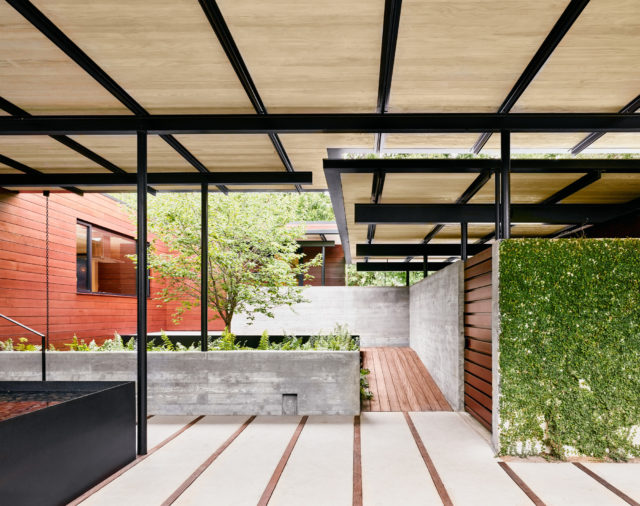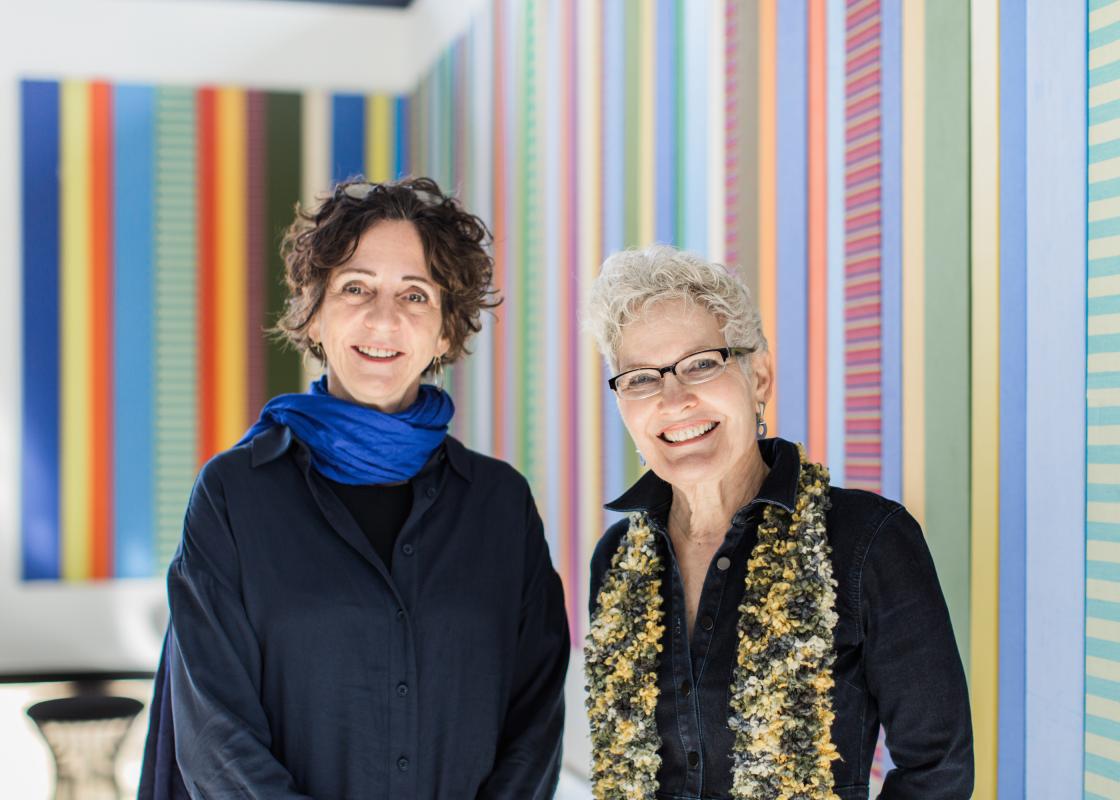Rice Design Alliance is holding its 2018 architecture tour April 7-8 and publishing this series of edited interviews on the theme "Balance: Celebrating Women in Design." Natalye Appel is Principal of Natalye Appel + Associates Architects and Trina Jones Stanfield is an interior designer in Houston. They are featured designers on the upcoming architecture tour for their work in collaboration with Lake Flato on 4533 Magnolia.
Cite: How did you come to design?
Natalye Appel: I was really interested in architecture when I was a high school senior. I was especially interested because my high school counselor counseled me against going into architecture as a woman. She said it was a difficult profession for a woman and with all my test scores, and things I like to do, she recommended I should go into food service instead. Now, as an adult, I know she was also right that I would still have loved that. But I am so glad that she said, no, architecture is a man’s profession. I just said, I am going to apply to architecture school.
I loved it from the moment I started and met Eleanor Evans at the School of Architecture when I went for my interview at Rice University. I saw the most beautiful things which relate to design of all sorts. I spent the whole first hour talking to her about the things she had made and that she had collected. I said, well, if this is architecture, I’m in. That’s my story.
Trina Jones Stanfield: That’s a great story. I’m kind of the opposite. I had no idea there was a field of interior design until I was in my first year of school. One of my friend’s suitemates was in a design class that she hated. She was supposed to be designing a kitchen. I looked at this project that she was really worried about and thought, this looks fascinating. I want to do this. So I changed my major and decided to come back to the University of Houston where I could get a design degree through the Fine Arts department instead of the Home Economics department at the University of Texas. As soon as I got into the design field in the classroom, I was like Natalye, I absolutely loved what I did.
I worked for a firm, Evans-Monical, Inc., for 18 years. It was very ahead of its time with ultra-contemporary furniture and fabrics and a design staff, and eventually became a commercial furniture company. I loved that and stayed there until it was about to close. I’ve been doing this for over 50 years and I love what I do.
NA: I didn’t know that part of your story. This is good.
 4533 Magnolia. Photo: Casey Dunn Photos.
4533 Magnolia. Photo: Casey Dunn Photos.
Cite: The theme of the tour is “Balance.” What does that word mean to you?
NA: Part of my answer will include Trina. Thinking back on 30 years of practice with my own firm, the balance that I get such pleasure in is working with other people. Collaboration is my balance. That’s what I really like in life. I love getting to know people. I love designing when we’ve got a team of people that have gotten to know each other well and can appreciate the client. Working with a great interior designer like Trina has been a pleasure every day. We have a client in common, here, we have worked with for years — 25 years. This is our second project together for them. That becomes part of your family.
No one can do everything well. In my practice, we have called in people that I’ve known through the years that I know are especially good at something. We have done a lot of joint venture with other architects. I think, wow, this would be a great project to work on with this other firm. I would not have been able to be a part of such great things without the right people being on the team.
TJS: The client is just as much a part of that team, which is a wonderful balance. I agree with Natalye, you become good friends with the clients. In the architecture and design field, especially residential design, you have to know them intimately. As an interior designer, I ask intimate questions about how they live to make sure our solution is personal.
Cite: For those that are looking into the field of design, as women, what advice would you have for them?
TJS: For interior design, it is more common to see female designers maybe than it is for architecture. As a designer, I don’t feel that I had to battle the way a lot of female architects have to in order to get respect from my contemporaries or the people I was working for. It is a different struggle. I very much love working with female architects. There is an ease of communication that you get when it is women working together. It is not always true for male-female communication.
NA: For young architecture students, I think there are so many areas of architecture you can go into. People can be technical, design oriented, people and team oriented, construction oriented, detail oriented, big picture oriented, or money oriented. When you go out to your second or third job, my advice is to feel the part of architecture that is right for you and try to see how much you can make that happen. Don’t forget that the first ten years is about learning all those other pieces as well. You need to be a part of what is often a huge team of people. To understand all the parts is important to the continuing education outside of school.
 4533 Magnolia. Photo: Casey Dunn Photos.
4533 Magnolia. Photo: Casey Dunn Photos.
Cite: Natalye, could you speak more to the experience of being a woman in the architecture discipline?
NA: The high school counselor was right and wrong. When I graduated from high school in 1976 and started at Rice University, the profession was a little different. I wouldn’t call it intimidation. I am naturally curious and friendly so intimidation is not what I usually feel. I remember it did take a little while to get enough education beyond school, a practical education working for different firms. The experience working on a job site — you gain the respect by gaining knowledge. I never felt much pushback even from contractors because I was female. I felt pushback because I was young. There were not many times I was called “little lady.”
People do tend to migrate into their professions differently if they are a woman versus a man. A lot of women end up being their own boss. Men who are heads of firm have also learned not just what women but what families need in order to be productive and survive. The culture of architects staying up all night and charrette-ing in architecture school in the studio is one thing, but the culture of being in a workplace is another. People are in a completely different stage of their life and rarely can sustain that for very long. It’s not just women who have learned to balance workplace hours and having family.
Brenda Cruz-Wolf contributed as an interviewer and videographer for this series.










